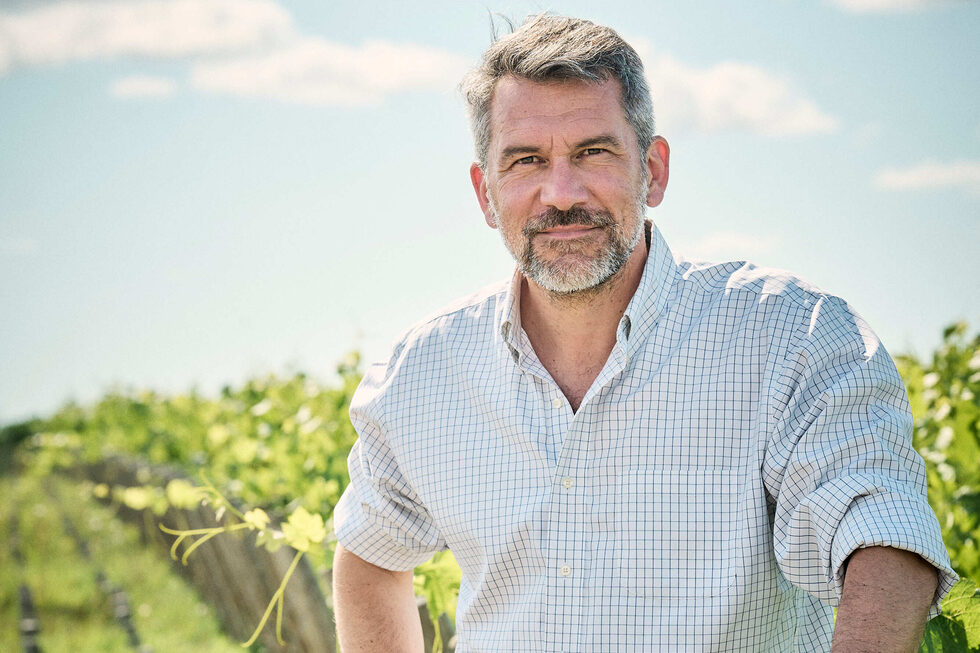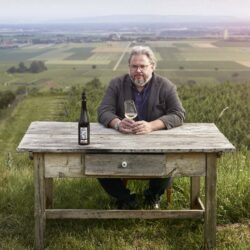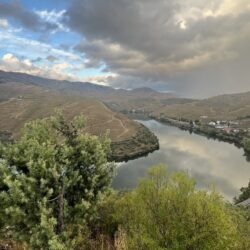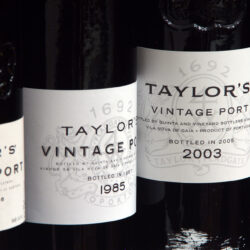In conversation with Nicolas Glumineau, Winemaker at Chateau Pichon Longueville Comtesse de Lalande.
We take a look back through some key vintages, hear about how the ’23 vintage is shaping up, learn about the challenges of petit verdot and childhood memories evoked by the ’85.
“Pichon Comtesse has always had this distinctive character: a wine in the Pauillac appellation with a unique, expressive character”
How is the ’23 vintage looking?
“Having worked in Bordeaux for a few years now I am not going to tell you it’s the vintage of the century but, we were positively surprised by the wines of ’22. Not only because they are very, very good, but also because the weather was so dry and warm we just couldn’t expect to make a true Bordeaux, balanced classic bottle of wine in 2022, so we really enjoy it because we are very realistic and objective with it.
“On top of that, we expected that we were about to make the first Napa wine in Bordeaux, in August 2022, Napa or Australia..I don’t know, but you know what I mean. And it’s not the case at all. In ’23 I can remember last August lighting a cheminée fire mid-August when it was rainy and pretty cold. We were wearing shirts, not a t-shirt but a shirt on top, which was very strange. We felt that the warm summer was way cooler and not as dry as we now know it was. The season from April to late September was almost as dry and as hot as ’22, surprisingly. That’s maybe why we started the harvest on September 7, the very same day we ended in ’23. So it’s way above our expectations, as you know, nothing is predictable.
“In the end, I think, with ’23 we are back to the kind of wine we made in ’16 and in ’10. The cabernets are straightforward with the acidity, a kind of minerality, but serious wines. Not austere but they have the strength. And the merlots are very sweet, to the contrary. Very fleshy, so I am looking forward to the blending sessions in a couple of weeks.
“I think we have something very good in our hands. Its definitely a heterogenic Bordeaux vintage, in that it depends on each appellation. More or less rain, more or less mildew pressure. Since 2021 we are 100% organic and two-thirds biodynamic. And this year we were lucky enough to manage the mildew and to protect the crop, so in the end we did not struggle with it that much. I can remember 2021 was really tough for us, so we learned a lot in a few weeks. In fact we learned more in a few weeks in 2021 than experimenting organically in ten years!
I believe 2023 will be great. It will be a true classic wine, a classic Paulliac wine.”
Question: As a wine consumer I’m interested to sense the winemaker’s own personality or stamp on the wine. What aim do you have to giving your own personality to the wines?
The answer might be very long! What is absolutely clear to me is that the hero is in the glass, it is not me. Everything we do in the vineyard is done in order to reveal the potential of each single plot. Respecting each of them helps me as winemaker ensure the wine achieves its own personality.
1975
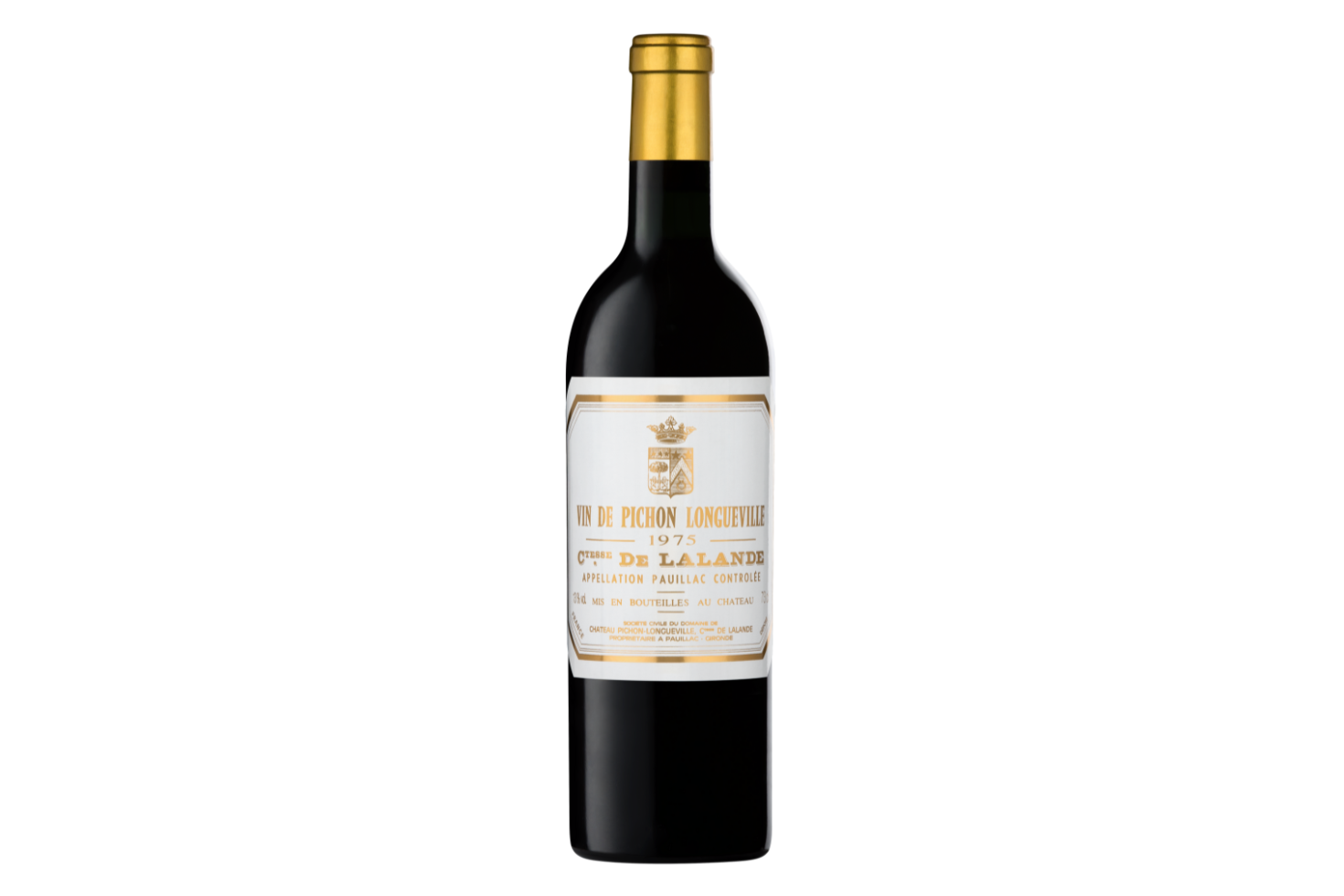
1985
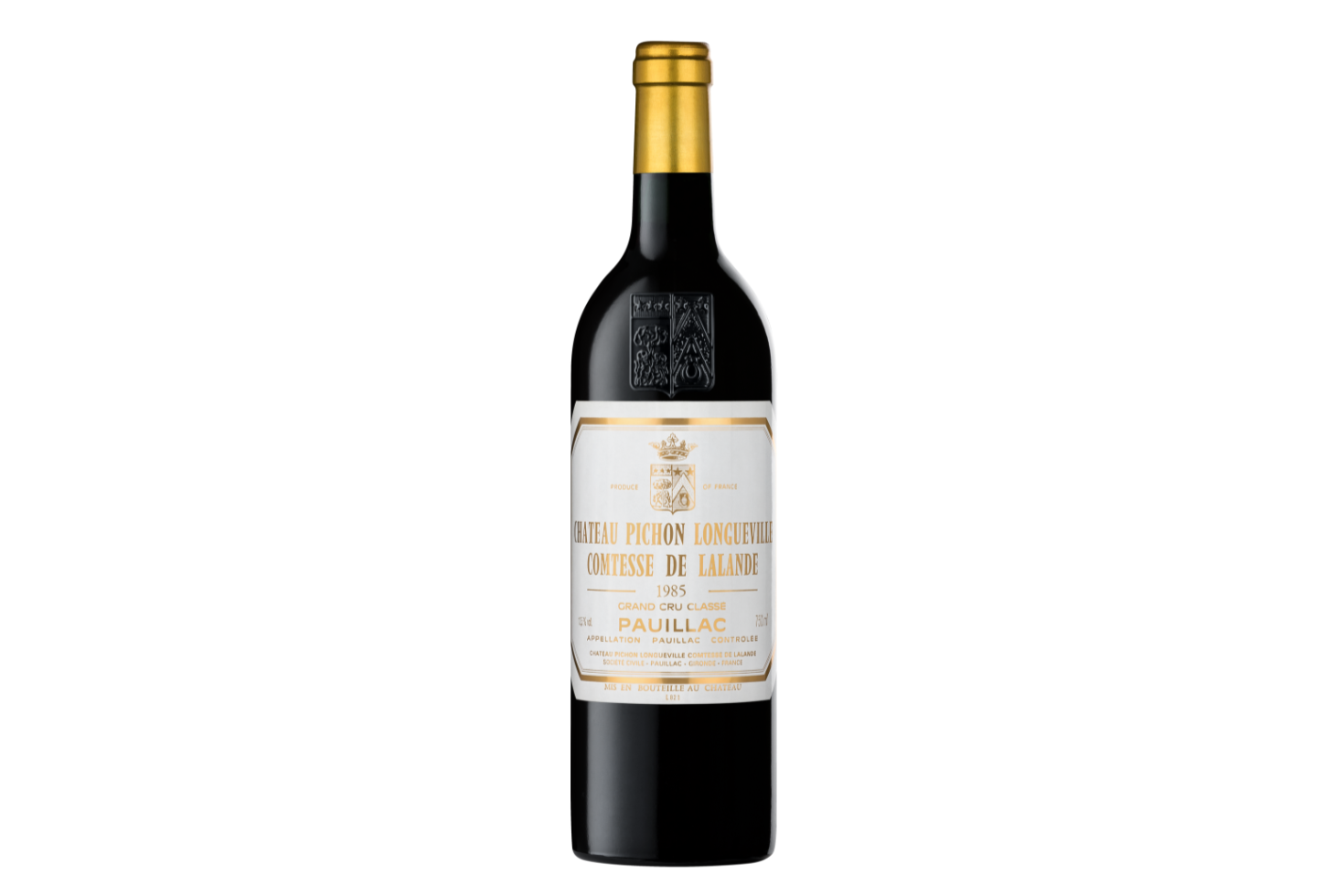
We have selected a lot of vintages ending in five, not by chance, but to see how every wine evolves in a decade. And that gives, I believe, a very interesting feeling about the ageing potential of our wines.
“First, the 1975. It is still very fresh and balanced. And, I must say, this is not the case for all ’75 wines from Bordeaux. ’75, ’76 and ’77 have all been made by Michel Delon, our neighbours from Château Leoville Las Cases. I should ask Jean-Hubert (Delon, owner Domaines Delon) one of these days to do a comparison between Las Cases and Pichon Comtesse.
“Then the ’85. You must understand that, Pichon Comtesse is famous for the ’82, for sure, which is an outstanding wine. I must say that I am also very impressed by ’83, by ’85, ’86, ’88 and ’89. And that’s the proof of the beautiful terroir that we take advantage of.
” ’85 is very Cabernet Sauvignon, minimum 75%. I love this tension in the wine. I had this feeling when I recently tasted it and the reminded me of my childhood. My father, years ago in the ’80s, used to smoke a pipe (when tasting this wine) and I have this sense that I can smell his Amsterdamer tobacco. It is strange to assume this. I mean for anyone who hasn’t smelled that particular aroma, it makes no sense but, when you know have, it’s the like an old library; it means something. I also love the ’85 because it is also very Pauillac, at the same time.
” ’85 is a true vision of Comtesse wine. We have the nose of what makes Pauillac, Pauillac. And that’s what we want to achieve today, being inspired by what happened in the ’80’s but, at the same time, writing a new chapter. Making wines in different conditions but trying to keep in mind fond memories of tasting those wines from the ’80s. I mean I love it. I am so thankful to my predecessors, as winemakers, who made wines in different conditions, also in terms of economics: huge yields and huge proportions of first label – in the end the wines are just fantastic. So, it’s a school of humility, for me. I must say some wines like ’80 and ’85, make me jealous.”
1996
75% Cabernet Sauvignon 15% Merlot 5% Cabernet Franc 5% Petit Verdot

1995
45% Cabernet Sauvignon 40% Merlot 15% Cabernet Franc

Personally, I prefer the ’96, it’s more my kind of wine.
“I have to confess that despite this, the replanting programme we will run and the final proportions of each grape we want to achieve in the near future, ’95 is telling us that we are right to keep some merlot in the blend. Not only for the expression of what makes Comtesse different from its neighbours. But also, and this is something amusing, because before I was making 2022 I would say that we’re going to replace a lot of our merlot with cabernet sauvignon and cabernet franc. For sure, the best merlot we have made in 2022 and 2023 are the best merlots we have ever made. So things are not that easy and sometimes you have this feeling you’re sure about almost everything. Yet in the end, I do know one thing, that I do know nothing!
“Every year there is a new baby to make; 2022 and 2023 have taught us a few things about resilience. Resilience of the vine and how it adapts itself to climate change. The 2022 and 2023 were slightly dry and warm. 2022 had four heat waves and a very severe drought. In the end, even if the yields are down, because of dry weather, the ability of the vine to produce grapes and fruit, which is not completely dehydrated is so important in order to keep this balance between power, intensity and acidity – it is the freshness and drinkability of our wines that is very, very impressive. What we have learnt is that the vine is not only a tool, it is our best friend.”
2005
64% Cabernet Sauvignon 29% Merlot 6% Cabernet Franc 1% Petit Verdot

2010
66% Cabernet Sauvignon 24% Merlot 7% Cabernet Franc 3% Petit Verdot

It is interesting to taste ’95, ’85, ’75 side by side, giving us an idea of how those 2005 and 2010 are going to evolve, we can see the 2005 is still a bit tight.
You can probably cellar this wine for a few more years but I think it’s in line with what we have tasted with the 95 and 85. And 85, personally speaking, I really enjoy. This filiation is truly impressive, going back to my story about this long vertical tasting, to taste the evolution in time and to taste the filiation year after year. When the origins of the wine are absolutely obvious. That’s the responsibility we have, to express at its best what the terroir wants to give us.
That is one of the things that I really enjoy about my job; that is that it is made of 25% scientific knowledge and 75% empiricism. The fact that we have to adapt ourselves every year to the conditions we have. But in the end, and during the blending sessions – it’s something like an obsession – to keep in mind for this tasting, for instance and try to recreate it. Let’s say we have the parts, the play is written and now we have to conduct the music. Every year we have a new version of the same Requiem, or Gloria, to play. And that’s fascinating, we have one trial every twelve months.
And with each year, assuming that this trial comes again, faster and faster. I am already thinking about the ’22, that I need to project myself in the blending sessions of the ’23 vintage in a few weeks (November 2023) – what have we learnt those past 10-15 years that we should apply to the new wine, but better, if possible?
That’s challenging but also fascinating and that’s why we love winemaking. It’s not a recipe, so that’s why getting this balance and vibrancy is so important. It is crazy to say it is not a recipe I want to apply every year but I want to make a wine that will make you think of the former vintages but in a different expression. It’s a bit strange, no?! That’s what I love to make.
2016
75% Cabernet Sauvignon 21% Merlot 4% Cabernet Franc

2016 to me is a good example of the kind of things we are about to change, step by step. We have four grapes; mainly cabernet sauvignon, merlot, cabernet franc and a bit of petit verdot.
Although I’m not a huge fan of the petit verdot it’s a grape that we used to use to get some shoulders, mid-palate and density and colour in the blends. It was at a time when we did not talk about climate change. Today, in our wines, we have enough power, density, flesh and aromatic complexity in our wines without needing to add petit verdot – which is a very tough grape to grow. Very fragile to wind, to rain. It does not exactly grow like a vine, more like a bush. So you need to work on those plots a lot to try to cultivate it…it’s a lot of work.
My problem with it is that even if the wine is good by itself it’s very difficult to use it in the blend when you look for precision, some balance and refinements. And 2016 is a perfect example. The petit verdot grapes were absolutely right, the tannins were right. We absolutely did not over extract the wines, it was just infusion. The colour of the juices were very dark after 24 hours maceration. And we ran maybe two or three pump overs throughout the three weeks of winemaking. So it was infusion, it was safe. And once we started to blend, to run our blending sessions, we selected our best Cabernet Sauvignon, the merlot and the cabernet franc, then the press wines and the blend was all done. That’s 2016.
And, then we decided to add a few sips, a few drops, of petit verdot in this blend because we were that convinced that, in this year, the petit verdot was very different. We started adding 2% of petit verdot in the blend, that was way too much. We decreased to 1.5% and then 1%. At the end we decreased the amount of petit verdot in the final blend to 0.1% and I was convinced that it was not as good as without it.
I asked everyone at the Château, the accountants, my assistant, I mean everyone. In the end I organised a blind tasting and asked them to tell me which one was the different one. I said “If you can find it, tell me if it’s better or not”. 100% of the people who did the experiment could identify the wine with the petit verdot. And 100% of them said no, I prefer the wine without it. Since then we don’t use PV any more.
Step by step, the three plots of petit verdot that we have are going to be pulled up, except one. I want the people working at Pichon to keep the tradition alive. Who knows how the climate will evolve over the next 25 years. Maybe the petit verdot will be useful again. There are some decisions that make a lot of sense and have many consequences. But today, we have to assume that if this grape has been very helpful to us, it is not the same today. And if it goes in the direction of getting more sharpness and balance in our wines, it’s a decision I have to take.
And that’s my story!

